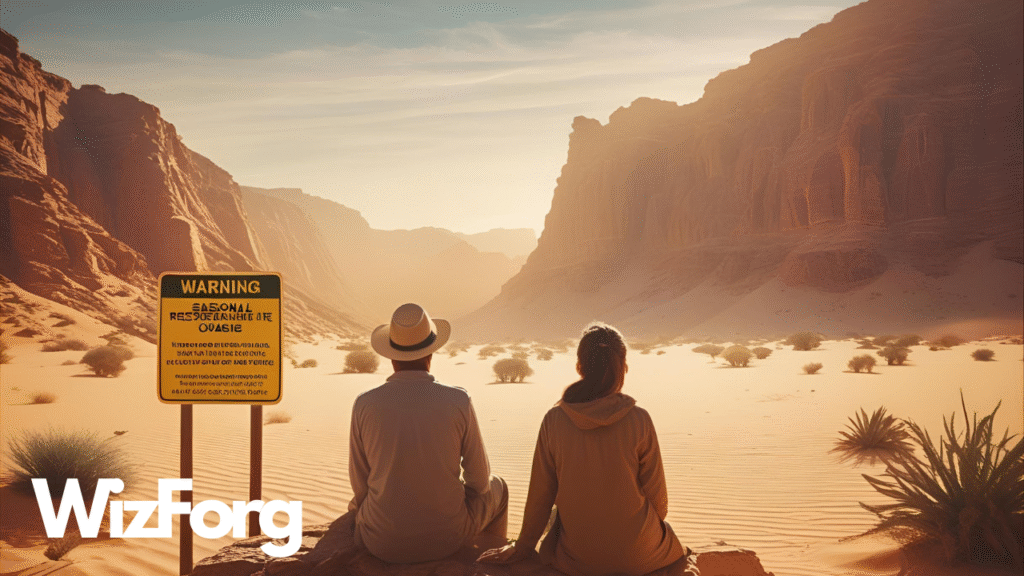At first glance, it looks like a sun-soaked paradise for adventurers: rolling dunes, wide-open skies, and absolute silence. But for half the year, one of the world’s most extreme deserts closes its gates to tourists, by law. Why? Because nature isn’t just unpredictable here—it’s dangerous.
Welcome to the Lut Desert
Iran’s Lut Desert (Dasht-e Lut) is not just one of the hottest and driest places on Earth; it’s a place of extremes. NASA satellites have recorded surface temperatures here reaching over 159°F (70.7°C)—making it the hottest place on the planet ever recorded.
Despite its brutal reputation, the Lut Desert is a sight to behold. Black volcanic formations, salt plains, towering dunes, and surreal rock ridges combine to create a stunning landscape that draws in scientists, photographers, and thrill-seekers alike. But this natural wonder has a rule: no visitors during peak heat months.
A Ban on Visiting? It’s About Survival
Each year, from mid-April to mid-October, Iranian authorities restrict access to the Lut Desert to protect both visitors and rescue personnel. During these months, the heat is so intense that even vehicles risk breaking down. Electronics can fail, tires can melt, and dehydration can strike in under an hour.
No tour companies operate, no permits are issued, and even seasoned guides avoid the area.
This isn’t a recommendation—it’s enforced. The desert is vast, remote, and largely uninhabited. Getting stranded without cell service or shade can quickly turn fatal. The region’s government doesn’t want to risk a spike in heat-related deaths or the cost of high-risk rescues.
Extreme Doesn’t Just Mean Hot
The Lut Desert isn’t just about high temperatures—it’s also known for:
- Massive shifting dunes, some taller than 1,000 feet
- Salt flats that reflect light and disorient travelers
- Yardangs, razor-sharp ridges carved by wind over millennia
- No water, no plants, no shelter—just miles of rock and sand
Even professional explorers describe the desert as one of the most physically punishing places on Earth.
So Why Go at All?
When the season reopens—usually in late October through early April—the Lut Desert becomes a prime destination for scientific research and eco-tourism. The lower temperatures make it possible to explore its Mars-like landscapes safely, and the dry conditions offer one of the clearest night skies in the world.
It’s also a UNESCO World Heritage Site, recognized for its unique geological features and untouched natural beauty. For those willing to brave its edges, the experience is unlike any other on Earth.
Can’t Tourists Ignore the Rules?
Some try. But illegal desert tours or unsanctioned treks have led to tragic outcomes. In recent years, a few solo travelers and off-grid campers have ignored the seasonal closure, resulting in them getting lost, stranded, or requiring costly search-and-rescue missions.
As a result, local enforcement has tightened. Drone monitoring, fines, and stricter border checks now discourage rule-breaking. Travel companies that ignore the risk of closure may face permanent loss of their license.
What Other Places Do This?
The Lut isn’t alone. Other extreme destinations like:
- Death Valley, USA (warnings issued during July-August)
- Danakil Depression, Ethiopia (access requires armed guides year-round)
- Antarctica (closed to tourists during full winter)
…also restrict or regulate tourist access to strike a balance between safety and sustainability.
Final Thoughts
The Lut Desert is both beautiful and brutal—a stark reminder that nature still sets the rules in some parts of the world. Its half-year closure isn’t a punishment; it’s a form of respect. Because when you’re walking through Earth’s hottest desert, the environment isn’t just scenery. It’s in charge, and it demands caution and respect.
Love learning about travel bans, hidden rules, and extreme destinations?
Explore more at Wizforg.com and subscribe to our YouTube channel for stories most tourists never hear.



